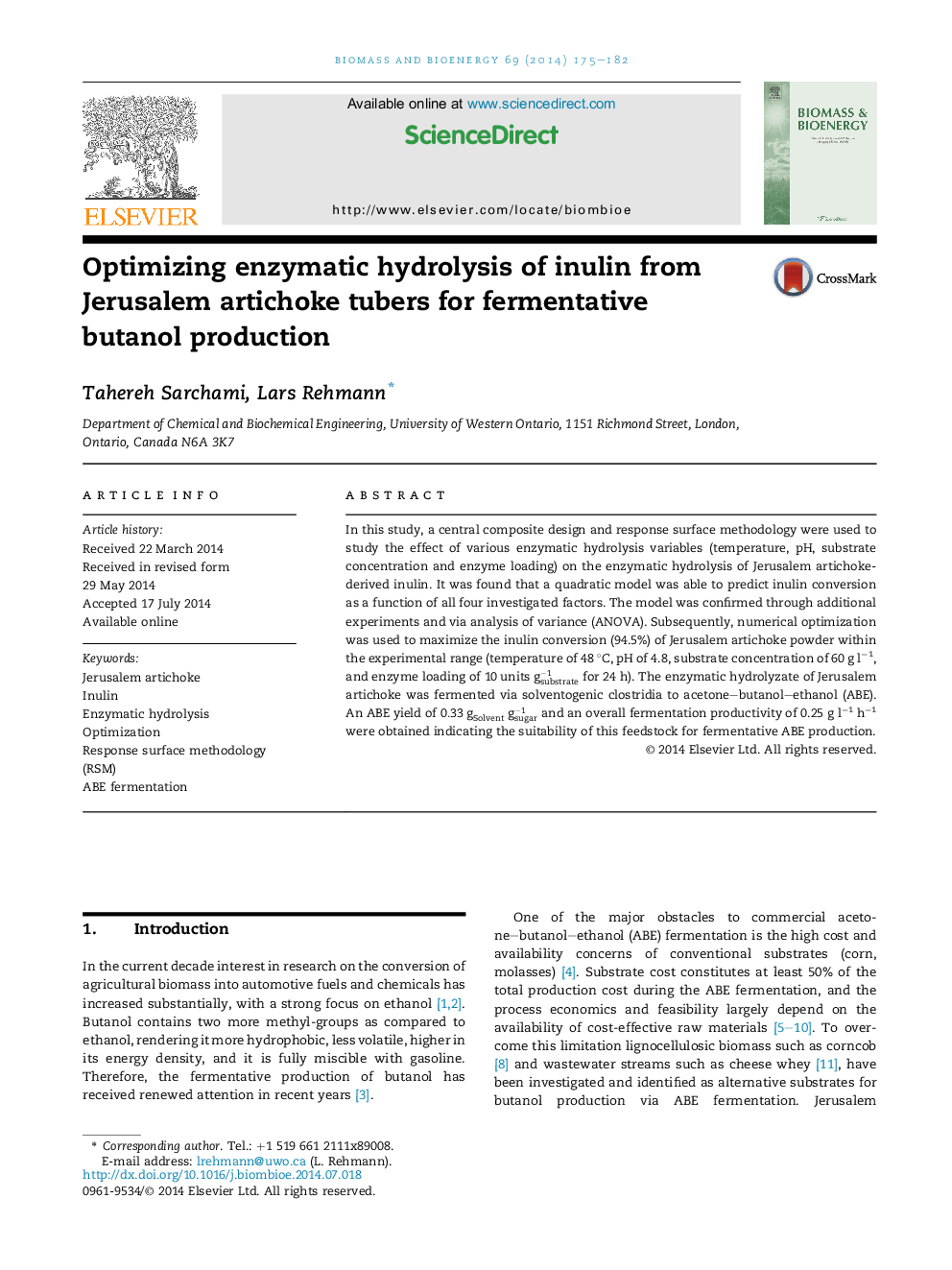| Article ID | Journal | Published Year | Pages | File Type |
|---|---|---|---|---|
| 7064330 | Biomass and Bioenergy | 2014 | 8 Pages |
Abstract
In this study, a central composite design and response surface methodology were used to study the effect of various enzymatic hydrolysis variables (temperature, pH, substrate concentration and enzyme loading) on the enzymatic hydrolysis of Jerusalem artichoke-derived inulin. It was found that a quadratic model was able to predict inulin conversion as a function of all four investigated factors. The model was confirmed through additional experiments and via analysis of variance (ANOVA). Subsequently, numerical optimization was used to maximize the inulin conversion (94.5%) of Jerusalem artichoke powder within the experimental range (temperature of 48 °C, pH of 4.8, substrate concentration of 60 g lâ1, and enzyme loading of 10unitsgsubstrateâ1 for 24 h). The enzymatic hydrolyzate of Jerusalem artichoke was fermented via solventogenic clostridia to acetone-butanol-ethanol (ABE). An ABE yield of 0.33gSolventgsugarâ1 and an overall fermentation productivity of 0.25 g lâ1 hâ1 were obtained indicating the suitability of this feedstock for fermentative ABE production.
Keywords
Related Topics
Physical Sciences and Engineering
Chemical Engineering
Process Chemistry and Technology
Authors
Tahereh Sarchami, Lars Rehmann,
